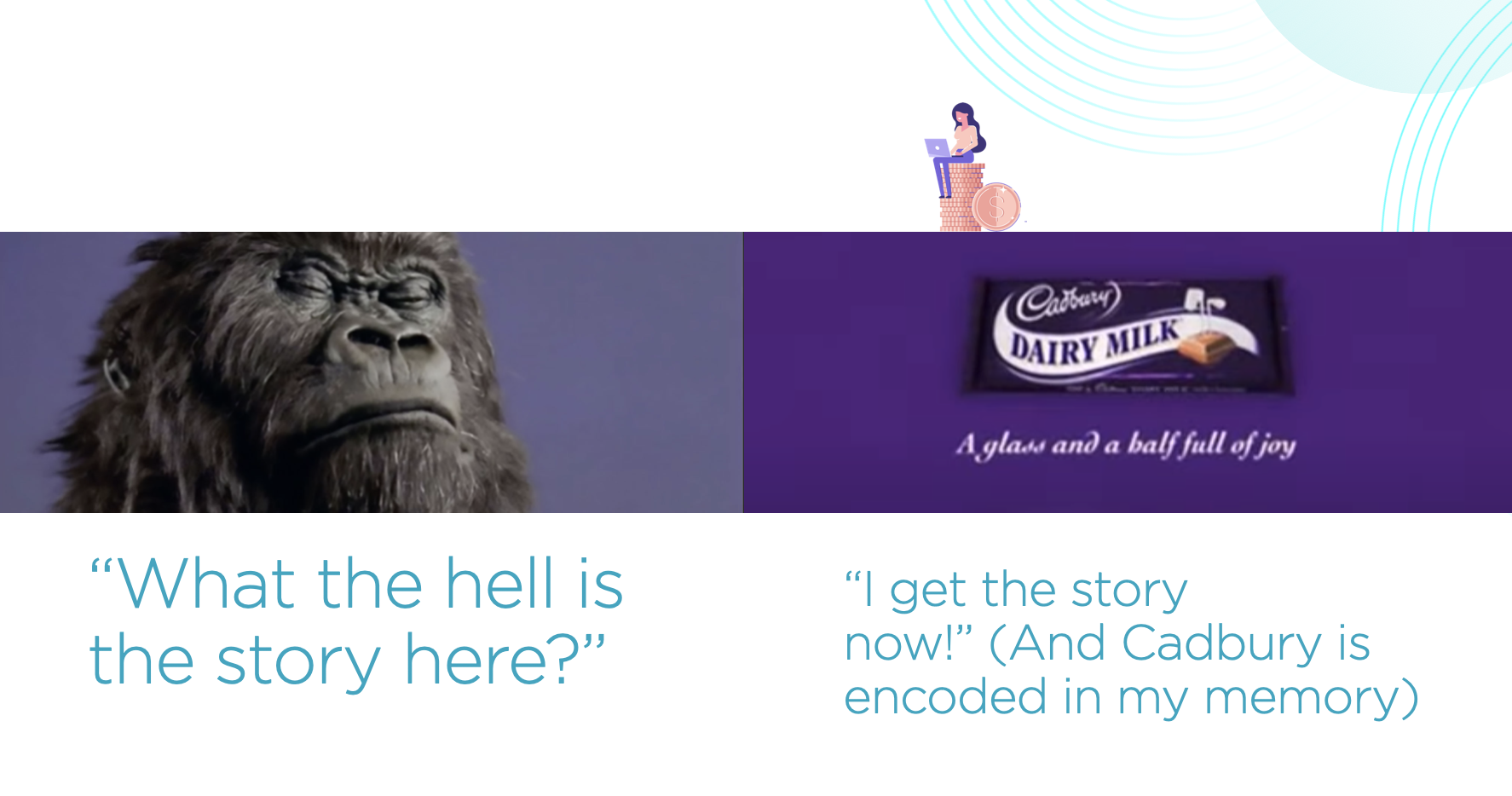Storytelling
‘Branding Moments’: What Can a Gorilla Playing the Drums Teach Us About Great Storytelling?
In 2015, Cadbury’s “Gorilla” was named the UK’s favorite ad of the last 60 years. But the commercial almost never made it to the public.
When Juan Cabral, Fallon London’s creative director, and Phil Rumbol, Cadbury’s marketing director, initially showed the ad to Cadbury’s leadership, they were told the ad would never see the light of day.
It’s easy to see why. The ad is absurd. It runs almost 90 seconds long. There aren’t any people in it. Hell, there isn’t even any chocolate. But Rumbol kept pressing, and after four months, leadership relented. The ad aired on August 31, 2007, during the season finale of Big Brother.
Before long, it went viral. More importantly, it drove a 10 percent increase in sales over the rest of the year. Watch the ad below and see if you can guess why.
Still unsure? I was, too, until some very smart neuroscientists revealed the true reason behind the ad’s success.
The secret to branding moments
In December 2019, during the heat of the Democratic primary, my creative partner Shane Snow and I were working with a company called Neuro-Insight to study how primary voters responded to Democratic campaign ads.
Neuro-Insight is a neuromarketing company. They use neuroscience technology to look at what’s happening in people’s brains while they watch ads and TV shows. What makes Neuro-Insight unique is their proprietary technology called Steady State Topography (SST), which pinpoints how likely someone is to remember an ad. They call this long-term memory encoding.
Over the past decade, Neuro-Insight has analyzed over 25,000 ads, and Cadbury “Gorilla” ranks in the top 1 percent for long-term memory encoding. There’s a key lesson here for anyone who wants to tell a story that’ll make people remember their company.
As humans, our brains are built for story. Whenever we watch something, our brain assumes there must be a story and tries to make sense of the narrative. This is particularly true when we’re introduced to a compelling character off the bat—like a gorilla playing the drums.
As we watch the gorilla get into the solo, passionately flaring its nostrils, our brain is engaged trying to decipher what’s happening. Our memory encoding peaks at the very end when we figure it out. A bar of Cadbury chocolate appears on screen, with the tagline, “A glass and a half full of joy.” It’s an ad for Cadbury chocolate and the joy it brings to our lives.
Neuro-Insight calls this a “branding moment”—when our brain finally understands the story and memory encoding peaks. If your brand’s logo or name appears at that moment, people are much more likely to remember it.

Since a big old bar of Cadbury chocolate appeared at that moment, it stuck in people’s brains. And the next time they were checking out at the supermarket and saw that Cadbury chocolate by the cashier, they were more likely to sub-consciously notice it, have a positive association, and buy it. Just like that, the ad increased sales by 10 percent—absolutely huge for a CPG brand like Cadbury. People remembered the commercial so well that they voted it their favorite ad nearly a decade later.

This approach doesn’t just work for B2C ads. Take this “Mean Streets” video from Adobe—one of my all-time favorites. There’s a strong story that hooks you off the bat—a frazzled middle-aged guy meeting a dealer to seemingly buy drugs, but it turns out he’s buying clicks. He gets arrested, and we don’t really know what the hell we’re watching until the very end, when we realize it’s an ad for Adobe Marketing Cloud.
There are a few things both these ads do really well:
- Until the branding moment, they prioritize the story over selling the brand. As Heather Andrew, Neuro-Insight’s former UK CEO, explained: “This is highly effective from the brain’s point of view because our brains often reject overt selling messages, while brand cues like colors, shapes, and sounds can get in ‘under the radar.'”
- The clip shows real people (or animals!) experiencing real emotion. The presence of people increased emotional intensity by 133 percent in a study of social ads.
- It introduces a compelling narrative right away. Branded content with an early story arc is 58 percent more likely to be viewed past 3 seconds.
The next time you watch TV, look out for branding moments. Which ads do it well? Which don’t? Then get inspired, and tell a brand story that people will remember.
Image by FiloGet better at your job right now.
Read our monthly newsletter to master content marketing. It’s made for marketers, creators, and everyone in between.




